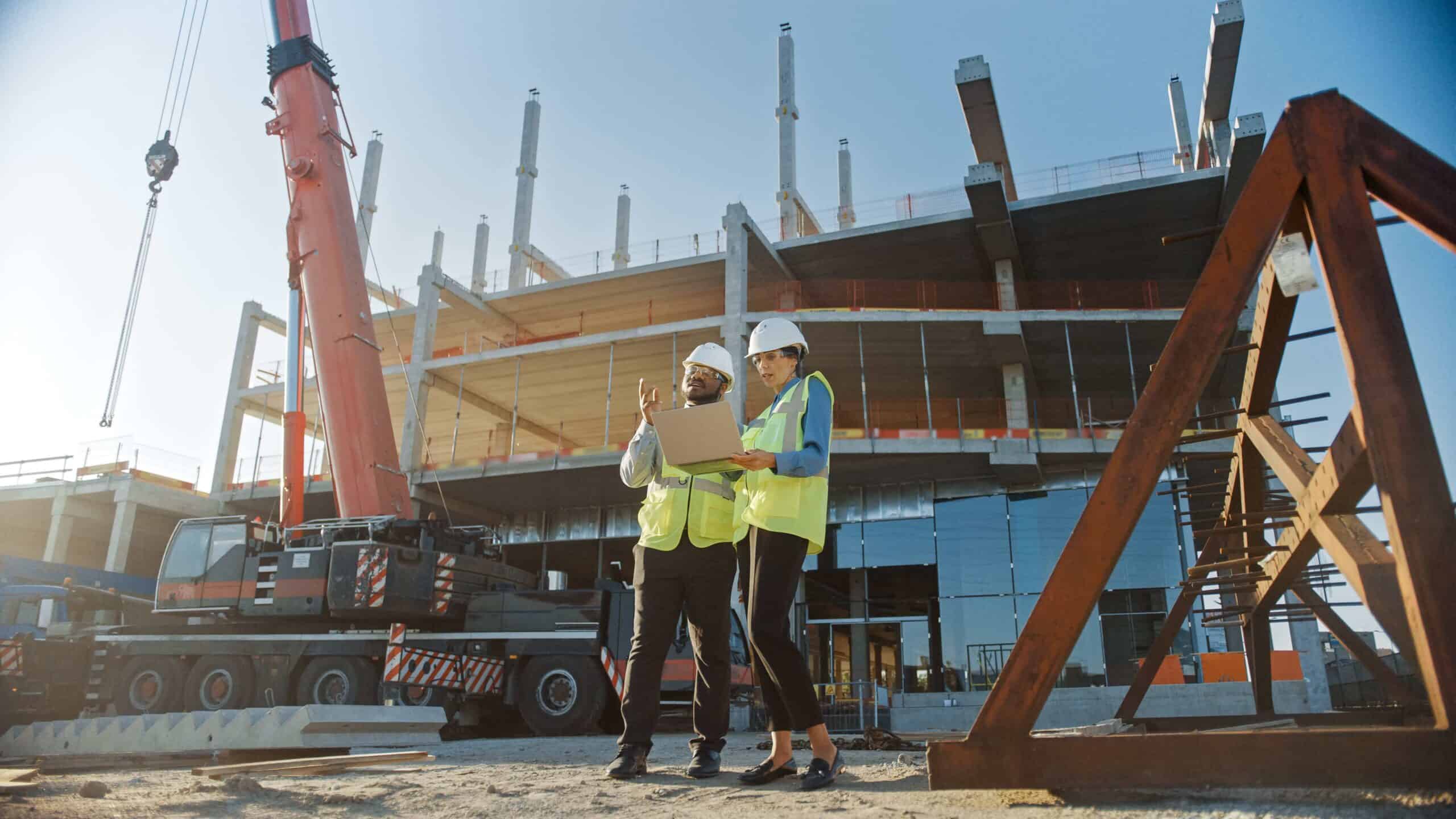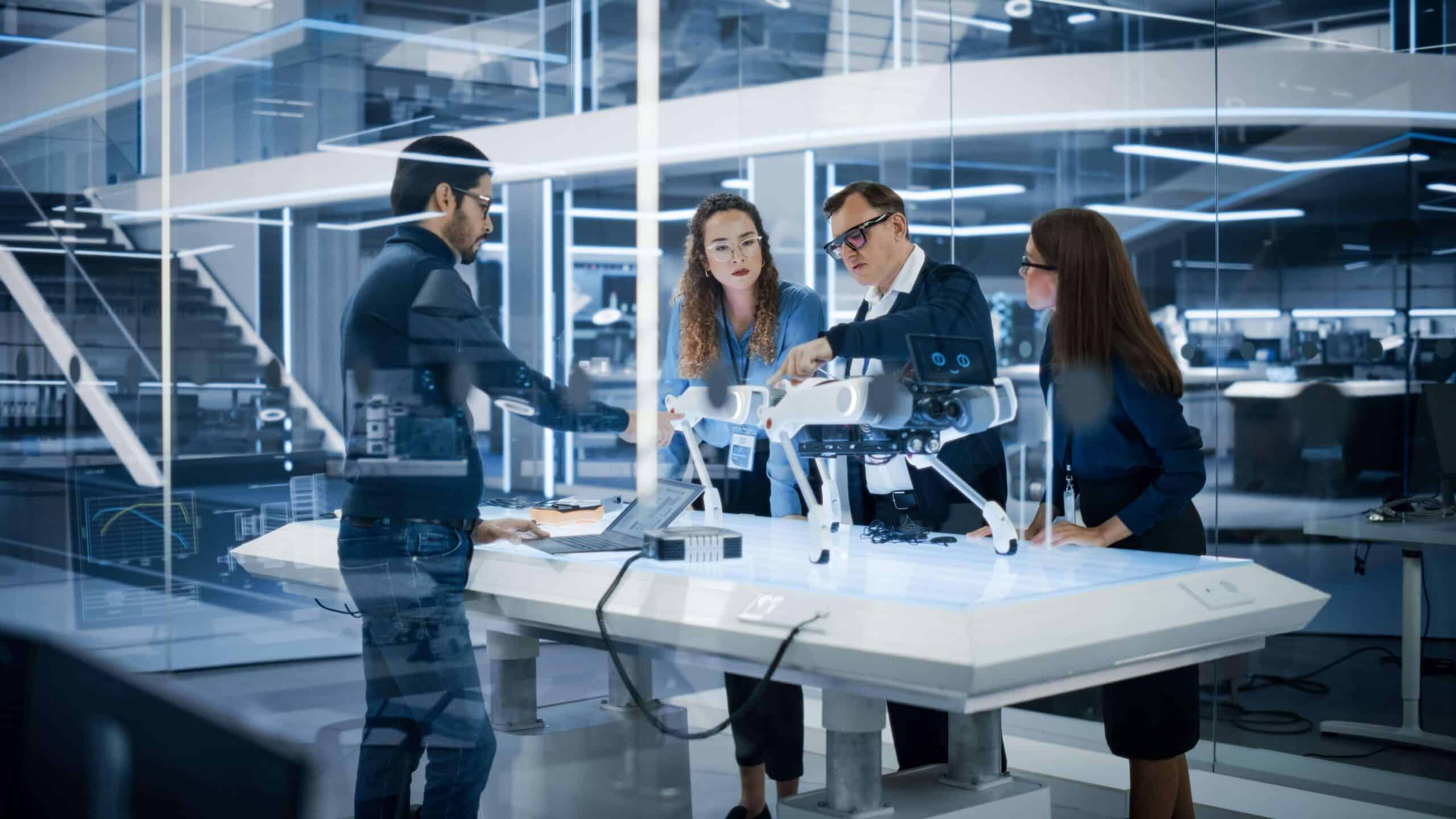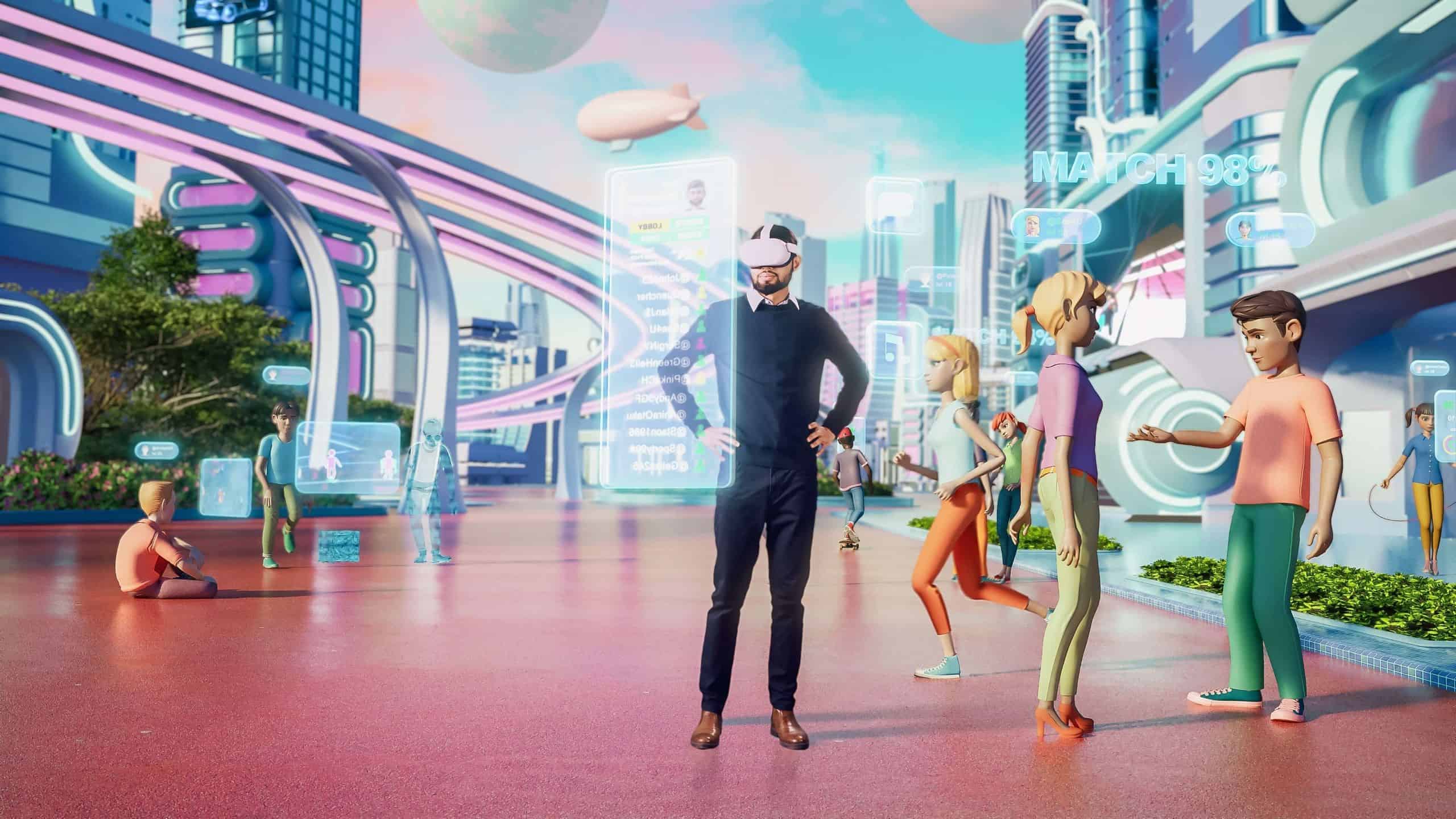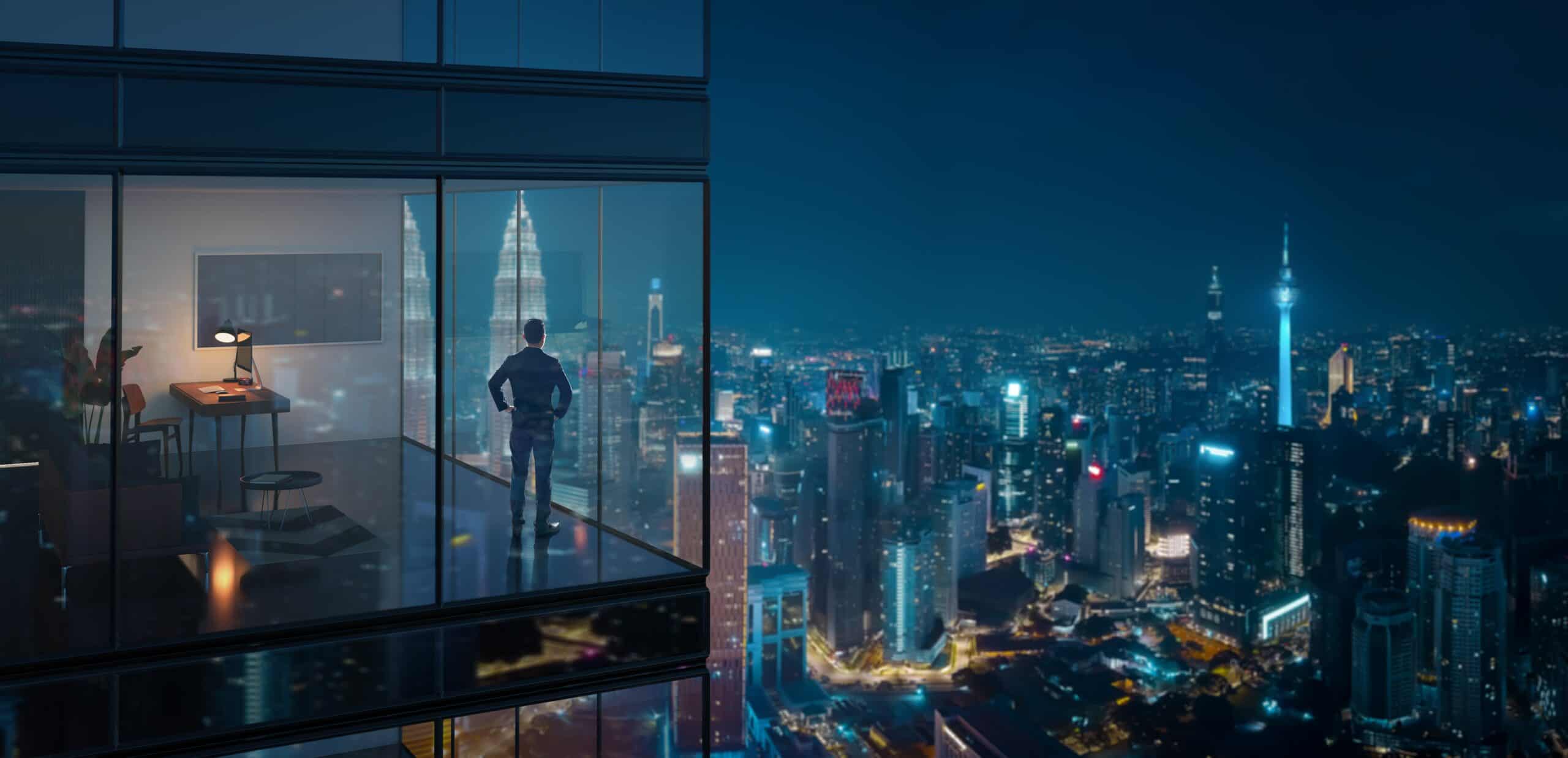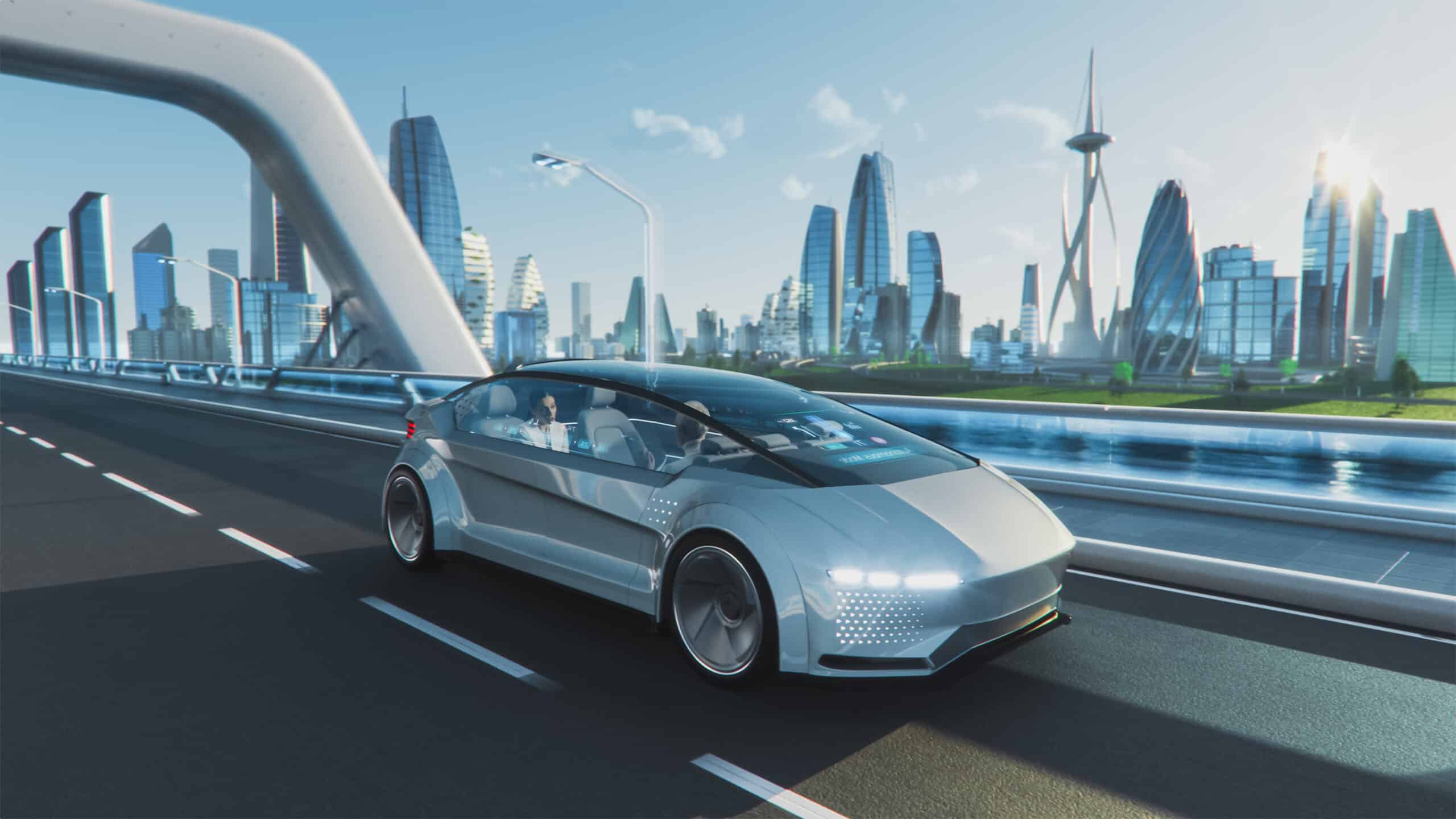- Revolutionising building controls with machine learning
- How technology can help reduce maintenance costs
- This 3D AI recognition system can detect damage in concrete structures
- A vertical robot that can clean skyscraper facades
- Robot-powered smart building management
- Closing thoughts
It may not be common knowledge, but commercial and residential buildings are actually one of the world’s biggest polluters, responsible for about 40 per cent of global greenhouse emissions, as well as 60 per cent of global electricity consumption and 25 per cent of global water consumption. In light of the global climate crisis, it’s becoming increasingly important to find a way to make our buildings more energy efficient and reduce their environmental footprint. One of the most effective ways to address this issue is to make buildings ‘smarter’ by installing various sensors, controls, and analytics dashboards, which would enable us to ensure the optimal functioning of air conditioning and environmental controls. However, even when a building is designed with efficiency in mind, that efficiency often degrades as years go by, whether due to subsystem malfunction, misconfiguration, or simply a change in conditions. What’s more, the initial design can’t possibly account for every problem that might arise over time. So, when something unexpected does eventually happen, the building’s systems will not always be able to respond in an appropriate manner. Another issue is that any adjustments usually have to be made manually by a building engineer, which is not exactly the most efficient way to go about it and is prone to human error. But what if we could assign some of that responsibility to artificial intelligence and machine learning algorithms instead? Compared to a human, algorithms can consider a far greater number of factors when deciding on where to make the adjustments, such as weather forecasts, the position of the sun, or its intensity. This enables them to control HVAC systems and other environmental controls with a much higher degree of precision.
“You’d probably need 45 engineers working 25 hours a day, making all these calculations, to come close to what AI is giving you for a few pennies on the dollar”.
Jean-Simon Venne, co-founder and chief technology officer at BrainBox AI
Revolutionising building controls with machine learning
With more than ten years of experience working on smart buildings, Jean-Simon Venne knows a thing or two about energy efficiency. After becoming disillusioned with the traditional approach to energy efficiency in commercial property, which failed to produce the desired results, he decided to found his own company, BrainBox AI, which uses machine learning algorithms to control the heating, ventilation, and air conditioning (HVAC) systems within a building. A traditional thermostat is designed to react to changes in its environment. This means that it will only make the necessary adjustments once the temperature rises above or falls below a certain threshold. On the other hand, a smart building control system can use a more proactive approach, whereby it anticipates future changes and makes adjustments to account for them before they actually materialise. What’s more, unlike a thermostat, a smart building control system isn’t limited just to turning up to heat or boosting the air conditioning; it can also employ passive climate controls, such as shades, significantly increasing its efficiency. “You’d probably need 45 engineers working 25 hours a day, making all these calculations, to come close to what AI is giving you for a few pennies on the dollar”, says Venne. “You should not attempt to do this manually for the same reason you should not play chess with a computer, because it’s just too good”. BrainBox AI can even control a building’s air quality by automatically adjusting ventilation based on external conditions, such as smog or high levels of pollen. “The amount of CO2 is often not monitored, or even considered”, adds Venne. “So those would seem to be the next logical steps, focused on the wellbeing of the people in the building”.
How technology can help reduce maintenance costs
Similarly, the US-based smart home technology company DwellWell has developed a new device that uses a network of multi-physics sensors to monitor the operation and performance of a home or residential building in real time. The data collected by sensors is then analysed by sophisticated AI algorithms, which immediately notify residential property owners and managers of potential issues with core property systems before they turn into something more serious. “We use a technology we developed called ambient inference”, explains Dan Simpkins, CEO and co-founder of DwellWell. “This sensor measures a lot of parameters, and those parameters are being measured from the ambient environment. By measuring the ambient environment, we look for changes that might indicate there’s a problem”. Among other things, the device can monitor the usage and performance of heating and cooling systems, track plumbing usage and detect malfunctions like leaking toilets and dripping faucets, and monitor voltages across the entire electrical system and report voltage disruptions and wiring faults. It also includes robust environmental reporting capabilities, allowing it to keep track of a wide range of indoor conditions, such as temperature, humidity, air quality, carbon monoxide, mould, and noise levels. One of the biggest selling points of DwellWell’s new device is that it doesn’t actually require professional installation. There’s no need to cut any pipes, attach the sensors to individual appliances, or even open a circuit breaker box — everything is measured remotely. Another notable advantage of the device is that no data is ever uploaded to the cloud, staying in the residence network at all times. “If you think about some of these other IoT platforms where they actually send the data to the cloud, and then there’s obviously an opportunity for hacks to access that data”, adds Simpkins. “We don’t do that. We keep all of the resident data locally”.
“Automated analysis and processing of enormous amounts of high-resolution imagery enables machine learning to find great numbers of small cracks in extremely large structures”.
Ludvig Emgård, CEO of Spotscale
This 3D AI recognition system can detect damage in concrete structures
For a long time, it was believed that reinforced concrete could last nearly forever and that it required very little or no maintenance. Obviously, we now know that this isn’t true and that concrete, as undeniably durable and sturdy as it is, still needs to be maintained from time to time. Sadly, this unfounded belief has had one unfortunate consequence in that there are now countless damaged buildings and defective infrastructure in need of repair throughout Europe. Conventional inspection methods can be rather time-consuming and are often prone to human error, which can severely limit their effectiveness. AI can offer a helping hand in this regard, allowing inspection teams to quickly analyse massive amounts of high-resolution images captured by drones for signs of damage to a wide range of constructions, including buildings, bridges, dams, and power stations. In addition to monitoring even the smallest individual flaws and defects in concrete structures, AI can also categorise them almost instantly, leading to significant time savings, improved quality, and better control over the condition of the built environment. Kiwa, a global leader in testing, inspection, and certification, recently joined forces with the tech company Spotscale to develop innovative inspection technology that uses machine learning algorithms to analyse 3D imagery and predict a concrete structure’s life expectancy. “Automated analysis and processing of enormous amounts of high-resolution imagery enables machine learning to find great numbers of small cracks in extremely large structures”, says Ludvig Emgård, CEO of Spotscale. “However, this requires that this huge amount of information can be structured in a 3D model to provide an overview of the flaws and their sizes across the entire structure, which has been impossible — until now”. While Spotscale will develop the software, Kiwa will provide the training material for its AI, as well as review the results of the automated inspection to make sure it meets the accepted standards.
A vertical robot that can clean skyscraper facades
The way we inspect and clean the exterior of our buildings today is just as expensive, inefficient, and potentially dangerous as it was back in the 1950s, requiring brave individuals willing to dangle from ropes exposed to the elements and risk their lives just to keep the structure in pristine condition. That may be about to change, though. Recognising the need for a better solution to this problem, Ido Genosar and Itay Levitan decided to build a robotic platform that would automate the building inspection and maintenance process, revolutionising the $40 billion industry. The main component of the platform is a vertical robot that can move autonomously up and down the building and clean its exterior. Made from aerospace engineering materials and weighing less than 10 kilograms, the robot can be installed on any existing roof and uses built-in cameras to inspect the condition of the building’s facade and determine where to go next. “Many high-rise buildings can only afford about two annual cleaning cycles, and each cycle can take up to four months, while our device will take about a month and can be used cost-effectively four to six times per year”, says Genosar. The footage captured by the cameras is analysed by a software platform, which uses machine learning algorithms to detect any flaws and damage to the exterior, such as breaks or leakages. “Our robotic device has cameras and provides a visual map with a navigation system for building owners and as such can also be used for predictive maintenance to save costs”, Genosar adds. Verobotics, the company founded by the pair, recently announced a partnership with the Hong-Kong based robotics company Robocore, which will see its robots used to inspect and clean the exterior of buildings across the city. If everything goes as planned, the company expects to deploy more than 100 robots by 2024. Besides Hong Kong, the robots would be deployed in the US, Australia, and Israel as well.
Robot-powered smart building management
With more than a hundred buildings around the world under its management, Phoenix Contact is recognised as a global leader in its field. The company also offers a building management system called Emalytics, which integrates seamlessly with all of the building’s processes, systems, and applications to provide a comprehensive overview of its operations. As the number of IoT devices within buildings increased over the years, it presented building managers with a new set of challenges in their everyday work. Any time an IoT sensor triggered an alarm or issued an error message, a technician had to go and inspect it manually to see what was wrong. This was not only time-consuming but also very tiresome due to the high number of false alarms. But what if the task could be assigned to a robot instead? To make this possible, Phoenix Contact turned to a company named Reply Robotics, which had previously developed an end-to-end robotics platform that allows human operators to give instructions to robots, which would then go about their tasks autonomously. Once the platform was integrated with the Emalytics solution, Phoenix Contact was able to first send an autonomous robot to check out any error messages or alarms triggered by an IoT sensor. Only if the robot, which is equipped with a thermal imaging camera and gas detectors, detects a more serious issue, such as a gas leak, would the company call for human intervention.
Closing thoughts
In the face of the global climate crisis, it is crucial to address the significant environmental impact of buildings. They contribute to a substantial portion of greenhouse gas emissions and consume substantial amounts of energy and water. To enhance energy efficiency and reduce their environmental footprint, smart building solutions are key. Incorporating sensors, controls, and analytics enables the optimal functioning of building systems. However, maintaining efficiency over time and responding effectively to unexpected issues pose numerous challenges. Artificial intelligence and machine learning algorithms offer a potential solution to this problem. By proactively anticipating changes, AI-controlled systems can optimise HVAC operations with precision, resulting in substantial energy savings. AI-driven technologies also transform building maintenance and inspection processes, enabling the timely detection of potential issues and reducing costs. Overall, the adoption of AI and robotics technology in the built environment promises to bring increased sustainability, improved maintenance, and optimised resource utilisation.


